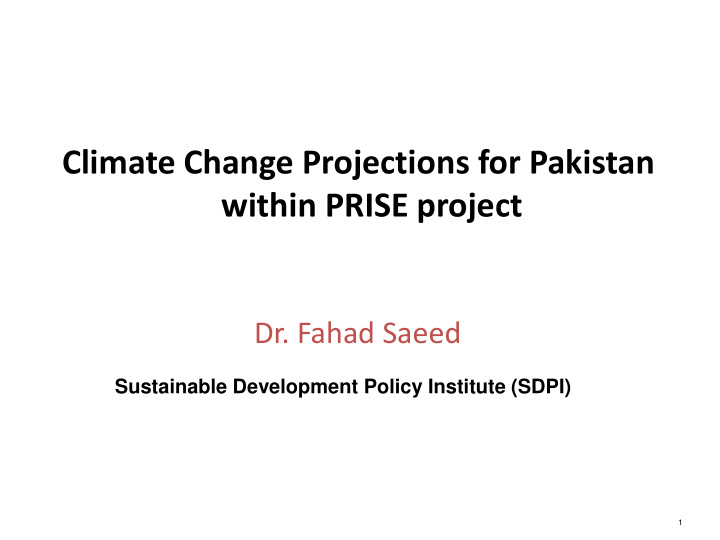



Climate Change Projections for Pakistan within PRISE project Dr. Fahad Saeed Sustainable Development Policy Institute (SDPI) 1
Intergovernmental Panel on Climate Change IPCC AR1 (1990) : “GHGs are substantially increasing , which would lead to warming” IPCC SAR (1995) : “Most of these studies have detected a significant change and show that the observed warming trend is unlikely to be entirely natural in origin” IPCC TAR (2001): There is new and stronger evidence that most of the warming observed over the last 50 years is attributable to human activities. IPCC AR4 (2007): Warming of the climate system is unequivocal IPCC AR5 (2013): It is extremely likely that human influence has been the dominant cause of the observed warming since the mid-20 th century.
Climate System Climate System consists of five interacting components: the atmsophere , the hydrosphere , the cryosphere , the land surface and the biosphere RH Moss et al. Nature 463 , 747-756 (2010) doi:10.1038/nature08823
Concept of Climate Models
Resolution Increases over Time Increased computing power has allowed increased resolution
Development of Global Climate Models (GCMs) … and increasing complexity.
A climate scenario is not a prediction of future climate The goal of working with scenarios is not to predict the future, but to better understand uncertainties in order to reach decisions that are robust under a wide range of possible futures.
Uncertainty …contribution from three different sources: i) from uncertainty in future emissions of greenhouse gases (GHGs) and other anthropogenic and natural factors that can affect climate, ii) from uncertainty arising from the natural internal climate variability, and iii) from uncertainty inherent in the modeling systems in order to estimate the response of the climate system to a particular GHG forcing.
Scenarios developed for AR4 after Nakićenović et al., 2000
No. of CMIP3 (AR4) GCMs used for different scenarios in the current analysis
How to read
How to read Climate Fact Sheet
Criteria for estimating the CONFIDENCE in projected changes
Criteria for estimating Signal Strength projected changes
- - - - - -- --
Representative Concentration Pathways
2m Temperature
Precipitation
Thank You
Recommend
More recommend